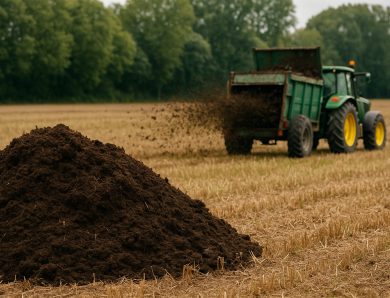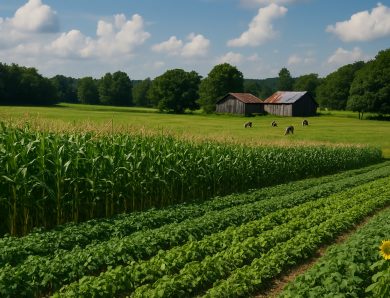
Why Soil Health Matters for Our Food and Climate
Soil health stands at the forefront of food production and climate management. Robust soil supports nutrient-dense crops and acts as a buffer for carbon emissions. This article examines how living soil benefits our food supply and stabilizes climate patterns.
A Strong Foundation for Nutritious Food
Soil functions as the hidden engine that powers our food systems. Microbial communities and organic matter in soil break down nutrients, making them available to plants. This process not only supports growth but also improves the nutritional profile of produce. Healthy soil contributes to:
- Nutrient Cycling: Microorganisms transform organic residues into usable minerals.
- Water Retention: Improved structure helps soil absorb and retain water during dry spells.
- Pest Resistance: A diverse ecosystem in the soil can limit pest outbreaks naturally.
Each element of soil contributes to the overall quality of food by providing a balanced supply of nutrients. Healthy soil also reduces the reliance on chemical fertilizers, which can have negative side effects on both the environment and food safety.
The Role of Soil in Climate Regulation
Soil acts as a carbon sink, storing carbon that would otherwise contribute to atmospheric greenhouse gases. Through natural processes, carbon becomes locked within organic matter, which helps moderate global temperature fluctuations. Healthy soil supports this cycle by:
- Storing Carbon: Organic matter in the soil captures carbon dioxide from the atmosphere.
- Maintaining Ecosystem Balance: Living roots and microorganisms work together to keep carbon cycling active.
- Mitigating Emissions: Practices that support soil health reduce the need for synthetic inputs that emit greenhouse gases during production.
Soil health directly affects the climate by controlling the flow of carbon. Agricultural practices that maintain soil vitality can lower greenhouse gas levels and contribute to overall environmental stability.
Key Practices to Support Soil Vitality
Farmers and gardeners adopt several techniques to improve and preserve soil quality. Sustainable practices ensure that the soil remains a productive resource for generations. Effective methods include:
- Cover Cropping:
- Planting cover crops reduces erosion and adds organic matter to the soil.
- This method interrupts pest cycles and maintains soil structure.
- Reduced Tillage:
- Minimal soil disturbance preserves microbial communities and soil layers.
- This practice limits carbon release and maintains soil moisture.
- Organic Amendments:
- Compost and other natural fertilizers boost microbial activity and provide essential nutrients.
- These amendments improve water retention and soil structure.
- Crop Rotation:
- Alternating plant species helps balance nutrient usage and prevents disease build-up.
- Rotation reduces the pressure on soil resources, allowing recovery periods.
Each practice supports soil integrity and contributes to a sustainable food system. They work together to create a resilient system that supports both agricultural output and environmental health.
Economic and Environmental Benefits
Investing in soil health produces tangible returns. Healthy soil not only increases crop yields but also reduces long-term costs by minimizing the need for artificial inputs. The environmental benefits include reduced water contamination and improved ecosystem services. Farmers who adopt soil-friendly practices witness enhanced soil fertility, leading to:
- Improved Crop Yields: Nutrient-rich soils produce crops with higher nutritional value.
- Cost Savings: Reduced dependency on chemical fertilizers translates into lower operational expenses.
- Resilient Ecosystems: Healthy soil contributes to a balanced ecosystem that supports biodiversity.
The economic rewards pair with environmental gains, fostering a sustainable system that benefits communities and nature alike.
Wrap-Up
Strong soil forms the basis of nutritious food and a balanced climate. The interaction between soil microbes, organic matter, and plant roots drives natural nutrient cycles and carbon storage. Sustainable agricultural practices maintain this delicate balance and secure a future where food quality and environmental stability go hand in hand. Each step taken to improve soil health represents an investment in both the food on our tables and the climate we experience.




No Comment